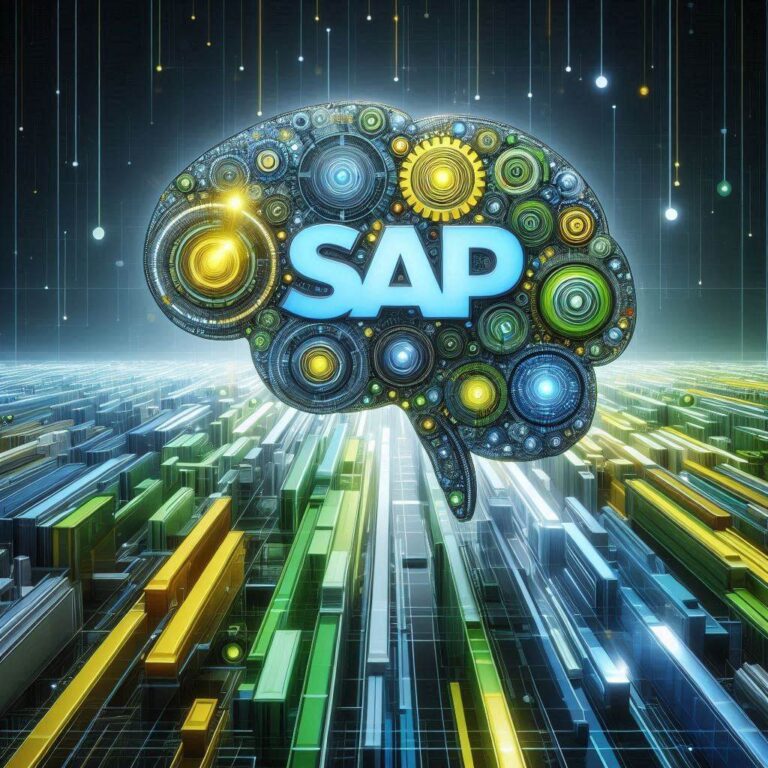Artificial Intelligence (AI) in SAP is one of today's most relevant and disruptive technological trends, offering enormous potential for improving the efficiency, innovation, and competitiveness of organizations. SAP, as a global leader in business software, is no stranger to this reality and has developed a vision and offering of solutions and tools to integrate AI into its business systems and processes.

Figure 1. Artificial Intelligence Technologies in SAP (AI).
In this article, we'll review the main AI capabilities offered by SAP, including embedded applications, platforms, and development tools. We'll also explore some real-world use cases and best practices for designing and implementing Artificial Intelligence projects in SAP, as well as the challenges and opportunities that lie ahead.
Embedded Artificial Intelligence Applications in SAP
One of the simplest and most direct ways to leverage Artificial Intelligence in SAP is through embedded applications that already incorporate machine learning routines or image and text generation to optimize and automate certain business processes. These applications are classified by functional modules, such as finance, supply chain, human resources, etc., and can be activated through specific licenses.
Some examples of these applications are:
- Intelligent Invoice Matching: It enables automatic invoice matching with bank statements, using machine learning algorithms to resolve discrepancies and improve the reconciliation rate.
- Fraud Detection in Travel and Expense Management: Detects anomalies and potential fraud in travel expense management, based on the analysis of historical data and company regulations.
- Intelligent Product Design: facilitates the design and configuration of complex products, using generative image and text models to create virtual prototypes and technical documentation.
- Resume Matching: helps select the best candidates for a job offer, using natural language processing models to analyze resumes and compare them with the job requirements.
These are just a few of the more than 50 embedded Artificial Intelligence applications in SAP, which can be consulted in the official documentation. These applications have the advantage of being integrated with SAP systems, leveraging the existing data repository, and offering a consistent user experience. However, they also have some limitations, such as dependence on SAP versions and updates, difficulty in customizing or extending them, and the need to combine them with external data for some use cases.
Figure 2. SAP Generative AI Scenario.
Artificial Intelligence development platform and tools in SAP
For use cases that require greater flexibility, customization, or innovation, SAP offers an AI development platform and tools for SAP that allow you to create your own applications using machine learning models or image and text generation models, whether your own or third-party. These solutions are based on the principle that there is no AI without data, and therefore, a data strategy is needed that aligns AI with business objectives and available sources of information.
Figure 3. Artificial Intelligence Services in SAP ready to use in SAP BTP.
The SAP AI Foundation is the AI platform for artificial intelligence. It's built on the SAP Business Technology Platform (BTP), SAP's cloud environment that integrates data services, analytics, integration, extension, and application development. The SAP AI Foundation offers the following capabilities:
Figure 4. AI Foundation as a lever for the development of Artificial Intelligence in SAP.
- Data Intelligence: It is the service that allows you to manage the lifecycle of Artificial Intelligence projects in SAP, from data ingestion, processing, analysis, and visualization to the development, training, deployment, and monitoring of machine learning models. Data Intelligence can be connected to various data sources, both internal and external to SAP, and can be used with both SAP Analytics Cloud and third-party tools for visualization and reporting.
- AI Business Services: These are prepackaged and reusable SAP AI services that can be consumed via APIs and integrated with various SAP or third-party applications. Some examples of these services include: Document Information Extraction, which extracts relevant information from unstructured documents; Data Attribute Recommendation, which enriches master data with additional attributes; and Conversational AI, which enables the creation of chatbots and virtual assistants with natural language processing capabilities.
- AI Partner Services: These are SAP AI services from third-party providers that can be consumed via APIs and integrated with the SAP AI Foundation. Examples of these providers include Rasa, which offers an open-source platform for creating chatbots and virtual assistants; DataRobot, which offers a machine learning automation platform; Google, AWS, and Microsoft, which offer various cloud-based AI services; and Anthropic, which offers state-of-the-art image and text generation models.
Figure 5. Integrating Generative Artificial Intelligence into SAP current applications.
These solutions offer greater flexibility and customization for building AI applications in SAP, but they also entail greater complexity and higher costs. They also pose challenges and questions, such as: Where is the data used in AI? Where and how do you want to run the AI algorithm? What do you want to do with the processed data? How do you integrate external data with SAP data? How do you choose the most suitable AI vendor? How do you ensure the governance, security, and ethics of AI?
Artificial Intelligence Use Cases and Best Practices in SAP
To illustrate the possibilities and benefits of Artificial Intelligence in SAP, let's look at some real-life use cases that demonstrate how Artificial Intelligence in SAP can add value to various business processes, such as planning, production, design, maintenance, customer service, and more.
Some examples of these use cases are:
- Demand forecast: It involves using machine learning models to predict future demand for a product or service based on various internal and external variables, such as sales history, price, seasonality, weather, marketing campaigns, etc. This allows for optimizing the supply chain, inventory, production, and distribution, as well as improving customer satisfaction.
Figure 6. Artificial Intelligence solution in SAP for risk-resilient demand planning.
- Managing the risk of late invoice payment: Analyze large volumes of accounts receivable data to predict payment delays and identify where collection activities would be most effective. Reduce the
cost of collections and minimize the write-off of accounts receivable.
Figure 7. Artificial Intelligence solution in SAP for managing late payments.
- Virtual Assistant: This involves using natural language processing models to create chatbots or virtual assistants that can resolve questions or queries from SAP users, whether internal or external. This improves the user experience, reduces response time, reduces the workload of technical support, and facilitates the adoption of new SAP versions or applications.
Figure 8. Example of SAP Joule copilot integrated into a collaborative portal.
Challenges and opportunities of Artificial Intelligence in SAP
Artificial Intelligence at SAP is a constantly evolving and growing field, posing challenges and opportunities for SAP, its customers, and partners. On the one hand, SAP faces the challenge of continuing to innovate and offer AI solutions and tools that adapt to its customers' needs and expectations, are easy to use and integrate, harness the potential of data, and guarantee the quality, security, and ethics of AI.
This is how Joule is presented, the generative assistant that places Artificial Intelligence in SAP in everything the software does, highlighting its still-incipient versions for consultants and developers.
Joule is the backbone of SAP Business AI technology, delivering immediate benefits of SAP AI embedded within core business processes, connecting finance, supply chain, purchasing, sales, marketing, human resources, and IT.
Figure 9. Artificial Intelligence Ecosystem in SAP for the business.
On the other hand, SAP customers and partners have the opportunity to leverage Artificial Intelligence in SAP to improve their business processes, competitiveness, and innovation. They also face the challenge of defining a coherent AI strategy, choosing the most appropriate solutions and tools, developing and implementing successful AI projects, and managing the organizational and cultural change that AI entails.
Ultimately, Artificial Intelligence in SAP is an exciting and promising field that requires clear and effective vision, collaboration, and execution.
See you next time!
Discover our SAP training
Find out everything on our blog and train in SAP with our Master in Financial Management and Functional Consulting SAP S/4HANA Finance, Official Sap S/4Hana Sourcing And Procurement Certificate and Sap S/4Hana Finance Official Certificate.



































Very interesting article, Unai. Thanks.